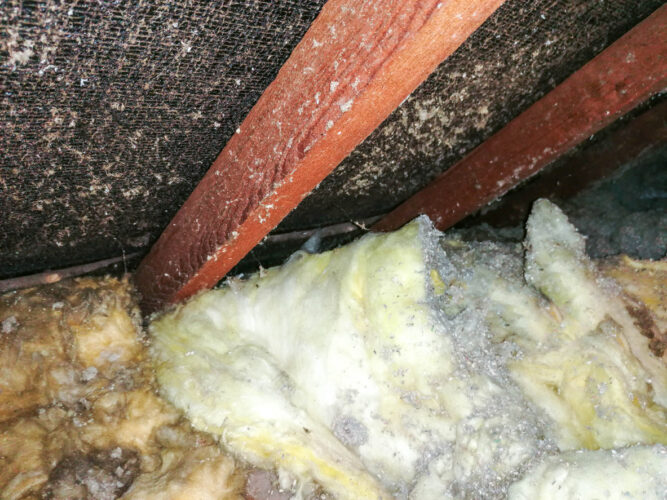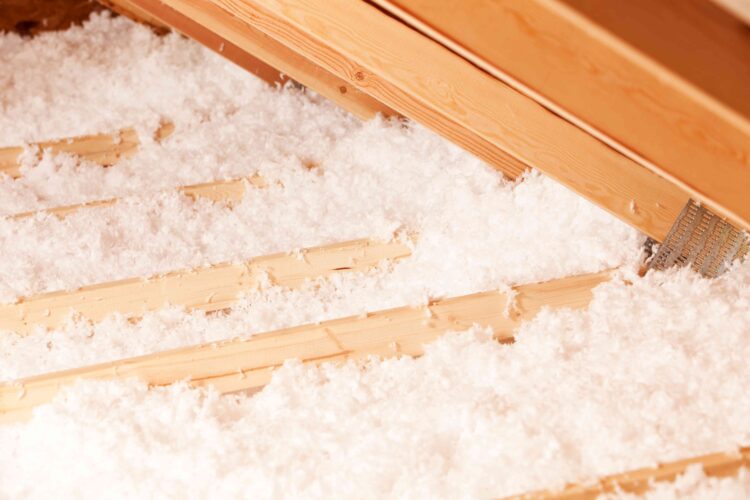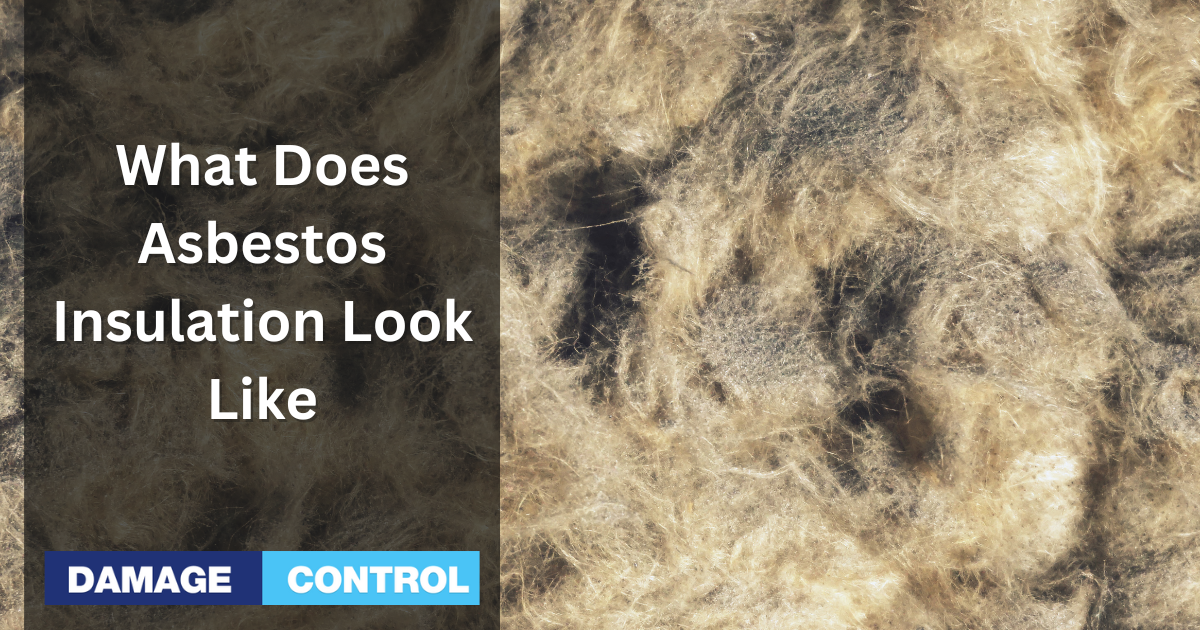Asbestos is a naturally occurring mineral that was commonly used in building materials for many years. It was prized for its insulating and fire-resistant properties, and it was used in everything from floor tiles to insulation.
Unfortunately, asbestos is a highly toxic substance that can cause serious health problems when inhaled. This article will explore what asbestos insulation looks like and how you can identify it in your home.
One of the most common types of asbestos insulation is vermiculite insulation, which is made from a mineral that looks like little pebbles. These pebbles are lightweight and have a grayish-brown or silvery-gold color. Another type of asbestos insulation is fiberglass insulation, which is fluffy and has a bit of a sheen. Asbestos fibers have a cottony consistency, and the space between the fibers slows down the spread of fire.
It is important to note that not all insulation that looks like asbestos actually contains asbestos. However, if you suspect that you have asbestos insulation in your home, it is important to have it tested by a professional. In the next section, we will discuss how to identify asbestos insulation in your home and what to do if you find it.
What is Asbestos Insulation?

Asbestos insulation is a type of insulation that was commonly used in buildings before the 1980s. It was favored because of its excellent heat-resistant properties, durability, and low cost. Asbestos is a naturally occurring mineral made up of thin, fibrous crystals. These fibers are strong, flexible, and resistant to heat, chemicals, and electricity.
Asbestos insulation can be found in a variety of forms, including loose-fill, block, and vermiculite insulation. Loose-fill insulation looks like shredded cotton and can be found in attics and walls. Block insulation looks like slabs or bricks of material and is commonly used in boiler rooms and around pipes. Vermiculite insulation looks like rocky gravel and is often found in attics.
Asbestos insulation can be dangerous if it is disturbed or damaged. When asbestos fibers are released into the air, they can be inhaled and cause serious health problems, including lung cancer and mesothelioma. Asbestos insulation should only be removed by a licensed professional trained in handling asbestos safely.
It is important to note that not all insulation contains asbestos. If you are unsure whether your insulation contains asbestos, it is best to have it tested by a professional.
In summary, asbestos insulation is a type of insulation that was commonly used in buildings before the 1980s. It is made up of thin, fibrous crystals that are strong, flexible, and resistant to heat, chemicals, and electricity. Asbestos insulation can be dangerous if disturbed or damaged and should only be removed by a licensed professional.
Why is it Important to Identify Asbestos Insulation?
Asbestos insulation is a highly hazardous material that was once widely used in homes, particularly in construction and insulation materials. This material is known to cause several severe respiratory illnesses, including lung cancer, asbestosis, and mesothelioma. Therefore, it is crucial to identify asbestos insulation in your home to avoid any potential health risks.
Here are some reasons why it is important to identify asbestos insulation:
Health Risks
Asbestos insulation can pose a significant health risk to you and your family if not identified and removed. The fibers can become airborne when disturbed, leading to inhalation and subsequent health problems.
Legal Consequences
Asbestos is a regulated material, and it is illegal to remove or dispose of it without following proper procedures. Failure to comply with the regulations can lead to legal consequences and hefty fines.
Property Value
Asbestos insulation in your home can significantly impact its value. Suppose you are planning to sell your home. In that case, it is essential to identify and remove any asbestos insulation to avoid any potential legal or health issues that may arise in the future.
Peace of Mind
Identifying asbestos insulation in your home can provide you with peace of mind. Knowing that you and your family are not at risk of exposure to this hazardous material can help you sleep better at night.
What Does Asbestos Insulation Look Like?
Asbestos insulation is a type of insulation that was commonly used in buildings before the 1980s. Asbestos was used in insulation because it is resistant to heat, fire, and chemicals. However, asbestos is now known to be a dangerous substance that can cause serious health problems, including lung cancer and mesothelioma.
There are several types of asbestos insulation, and each type looks slightly different. Here is a breakdown of what each type of asbestos insulation looks like:
- Asbestos in loose-fill insulation looks like shredded cotton. Its colors can range from white to silver, green, brown, gold, and blue.
- Asbestos in vermiculite insulation looks like rocky gravel.
- Asbestos in block insulation looks like slabs or bricks of material.
- Asbestos in pipe insulation looks like a white or gray wrapping around pipes.
It is important to note that not all insulation that looks like asbestos actually contains asbestos. For example, vermiculite insulation that was not made with asbestos looks very similar to vermiculite insulation that was made with asbestos.
If you suspect your home may contain asbestos insulation, it is important to have it tested by a professional. Asbestos can be dangerous if disturbed, so it is important to have it removed by a professional if it is found.
How to Identify Asbestos Insulation

Asbestos insulation can be difficult to identify with the naked eye. However, there are a few ways to recognize it. Here are some methods to help you identify asbestos insulation:
Look for Certain Types of Insulation
The most common types of insulation that contain asbestos are vermiculite, pipe insulation, and spray-on insulation. Vermiculite insulation looks like little pebbles with a grayish-brown or silvery-gold color. Pipe insulation is usually found on older boilers and pipes and looks like a white, chalky material. Spray-on insulation is a fluffy, grayish-white material often found on ceilings and walls.
Check the Age of Your Home
Asbestos was commonly used in insulation before the 1980s. If your home was built before 1980, it is more likely to contain asbestos insulation. However, it is important to note that asbestos was still used in some insulation products until the early 1990s.
Get a Professional Inspection
If you suspect your home may contain asbestos insulation, it is best to get a professional inspection. A certified asbestos inspector can take samples of the insulation and test them for asbestos. This is the most accurate way to determine if your home contains asbestos insulation.
Be Careful When Removing Insulation
If you need to remove insulation that may contain asbestos, it is important to take proper precautions. Asbestos fibers can be released into the air when insulation is disturbed. Wear protective clothing, including a respirator, and wet the insulation before removing it to minimize the risk of releasing fibers into the air.
What to Do If You Find Asbestos Insulation
If you suspect your home or building has asbestos insulation, it's important to take the necessary precautions to protect yourself and others. Here are some steps to take if you find asbestos insulation:
- Do not disturb the material. Asbestos is only harmful when its fibers are released into the air and inhaled. If you come across asbestos insulation, do not touch or disturb it in any way.
- Contact a professional. Asbestos removal is a dangerous and complicated process that should only be handled by trained professionals. Contact a certified asbestos abatement contractor to remove the insulation safely.
- Notify others. If you live or work in a building that has asbestos insulation, notify others who may be at risk. This includes family members, co-workers, and building occupants.
- Take precautions. If asbestos insulation is present in your home or building, take precautions to minimize the risk of exposure. This includes sealing off the area, wearing protective clothing and masks, and avoiding the area until the asbestos has been removed.
- Get tested. If you suspect you have been exposed to asbestos, get tested for asbestos-related diseases. Early detection is key to successful treatment.
Remember that asbestos insulation is a serious health hazard that should not be taken lightly. If you suspect your home or building has asbestos insulation, take immediate action to protect yourself and others. Contact a professional asbestos abatement contractor to safely remove the insulation and take precautions to minimize the risk of exposure.

